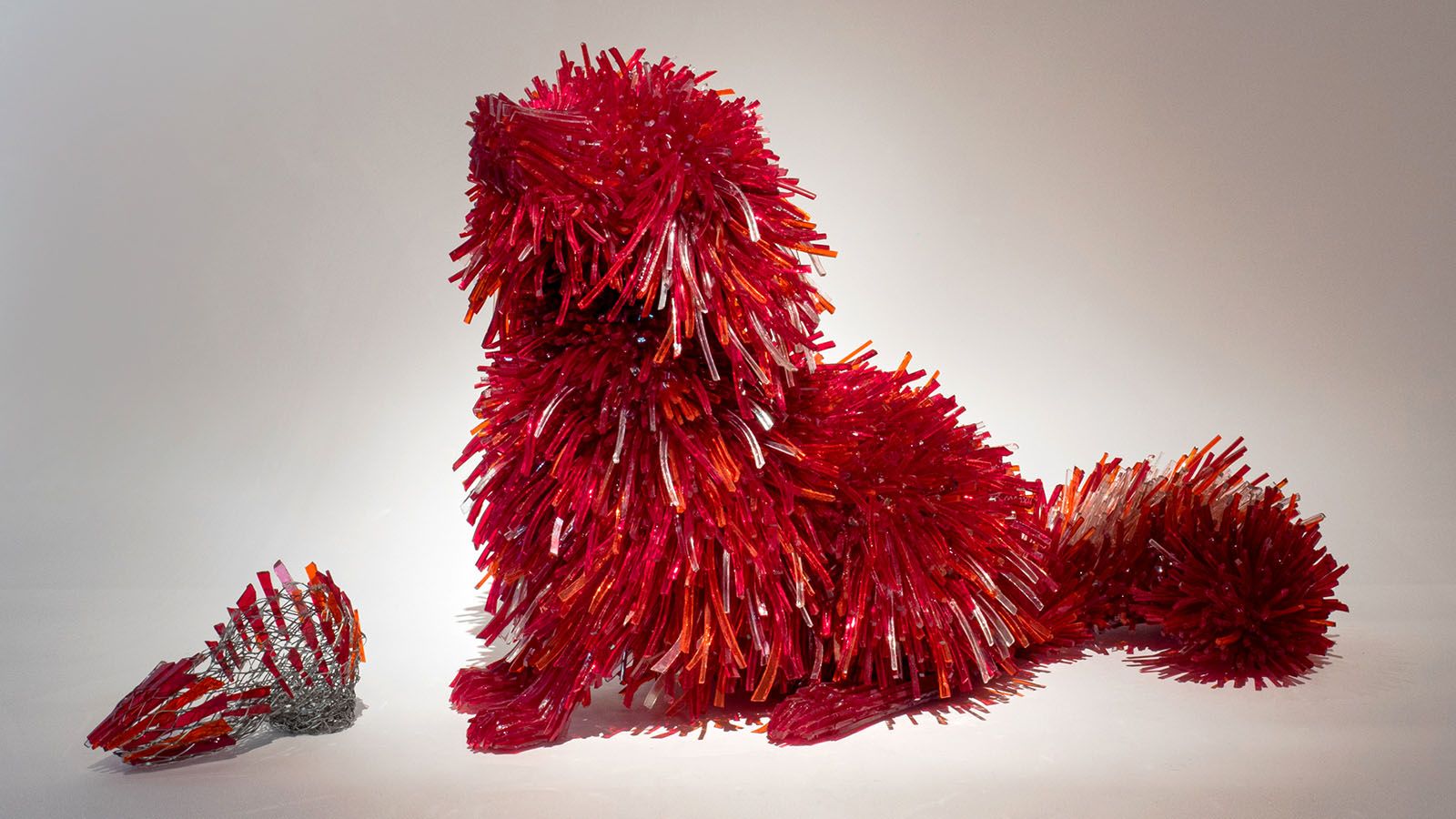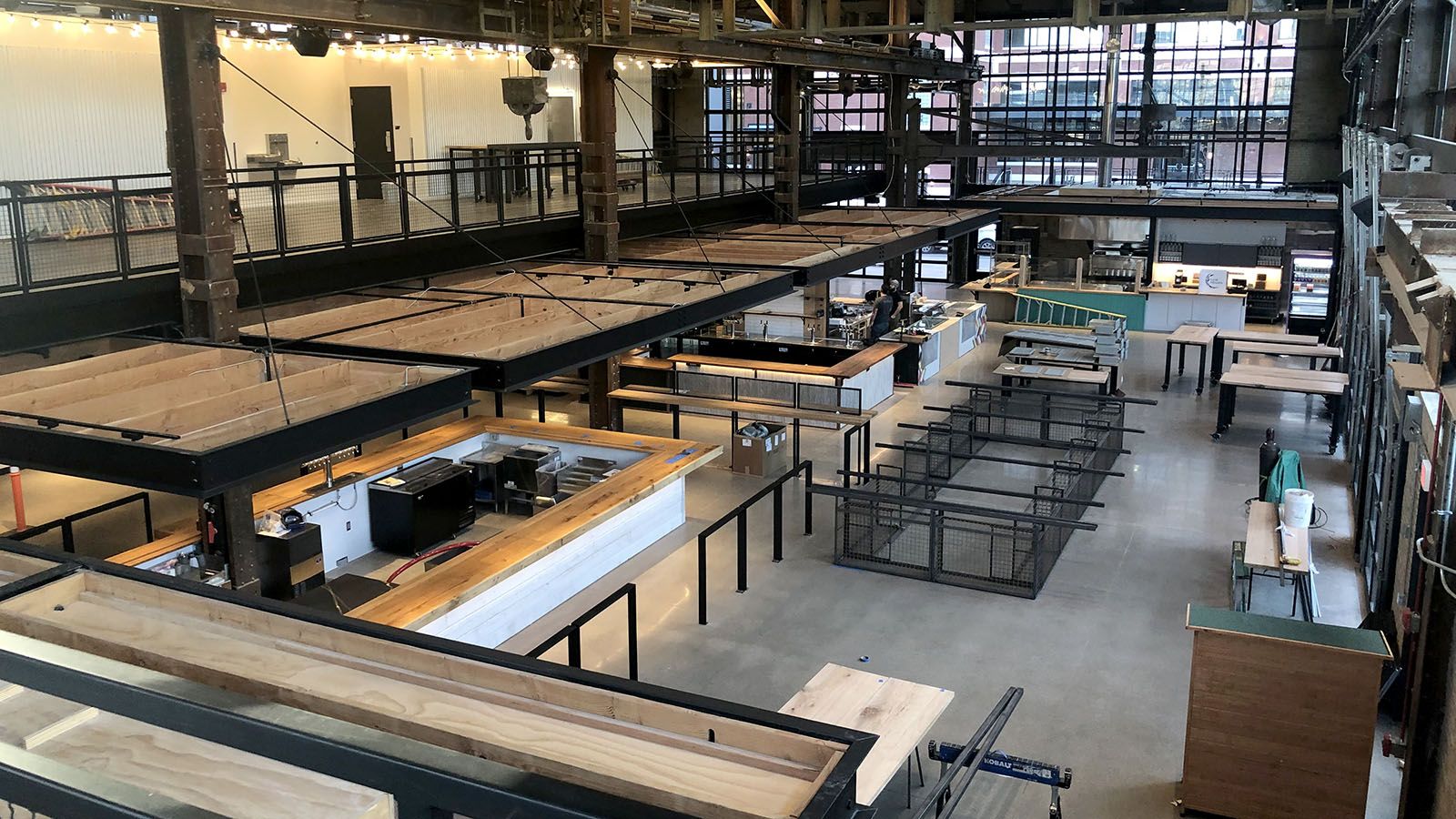Fort Wayne Museum of Art is a familiar downtown destination for art lovers, families, and school groups.
For years, the museum has been building momentum on a collection of pieces from all over the world in what is still considered an unconventional art form: the beautiful and intriguing world of studio glass.
Welcoming environment
As you walk in past rows of classical bronze sculptures, you enter a long hallway filled with huge, fantastical forms like giant orange flower petals that seem to float in the air, until you notice the steel frameworks holding them up. Each form is full of translucent texture and detail.
It’s an installation called Repose in Amber by Martin Blank.
That leads you to the three rooms of the Glass Wing, filled with light and presenting incredible varieties of sculpture from dozens of artists, monumental pieces 10 feet tall to thimble-sized, in every color imaginable, reflecting and refracting light and dazzling the eye. Studio glass is now the centerpiece of the museum, and they have dedicated three rooms, about half of the facility, to a permanent exhibit of a type of sculpture that most art museums still don’t even accept as fine art.
Charles Shepard, president of the museum, is adamant about creating an environment where anybody can come as they are and appreciate art in a welcoming atmosphere, which is the opposite of the elitist fine arts museums he visited as a young man.
“You don’t have to know anything walking in,” he said of the Glass Wing. “It’s beautiful. You don’t have to read a book first. You don’t have to understand the process of how it was made, but you might get a kick out of that later. If you just walk in, you don’t feel foolish or awkward or anything.
“Our goal is to become the largest collection of contemporary glass, studio glass, in the whole Midwest” he said. “Fort Wayne is the destination.”
What is Studio Glass?
“Glass, of course, is thousands of years old,” Shepard said. “In America, in 1963, a guy named Harvey Littleton was a professor of ceramics, and he thought, ‘I wonder if I could take a ceramics kiln and melt glass and make sculpture out of glass rather than clay?’ And so Harvey launched what we know as the studio glass movement in America.
“Their whole mission was to figure out how to make glass, not in a glass factory, but in an artist’s studio. It wouldn’t really be a functional vase or plate or whatever, but it could reference that.
“If he could train enough people to do that, then his theory was glass would prosper all around the country because students would love it as a brand new, exciting medium to make art in. And he was exactly right. It continues today, it’s worldwide, and the practitioners pretty much flow in a porous way from Europe to here to there.”
Focus for museum
As I walked through, looking at beautiful and whimsical examples, I learned about artists from different places.
One center was the Corning glass factory in upstate New York, which you know from the Pyrex in your kitchen to the Gorilla Glass screen on your iPhone. As soon as these artists got to Europe in the ’60s, they found kindred spirits working from the multi-hued millefiori in Italy to the stately cut crystal in Czechoslovakia and even farther afield. They were individual artists stepping out of assembly-line factories and into their own studios, creating a new kind of sculpture.
So why is it that studio glass isn’t consider real fine art by the major museums?
“In the training of an art historian, our school programs don’t include any of what you might call the decorative arts,” Shepard said. “So glass is considered a decorative art or a craft. We don’t include wood carving, we don’t include jewelry. We have a kind of a line in the sand, if you will, that we don’t cross.
“Now, I don’t particularly feel that way, although I was trained classically.”
Shepard got serious about studio glass around 2013.
“What I saw at a glass sculpture show blew my mind because I didn’t look at it as decorative arts. I looked at it as sculpture. ‘Wow, that’s pretty cool.’ It quickly led me to see that this is something that I think our museum should focus on.
“Most fine art museums don’t include glass because they draw that line. So we thought, ‘We didn’t draw the line.’ So we don’t even have to erase the line.”
Continuing collection
Some of the sculptures, even the huge, riotously-colored vase-like objects by the most famous artist in the genre, Dale Chihuly, are so fragile-looking that you wonder how they hold themselves up. Indeed, a few small pieces are in glass cases to protect them.
But for the most part they are exposed, and you can cautiously see them up close, from many angles, and see the way light refracts through them, revealing amazing details. Then again, some of the pieces are huge and opaque and weigh hundreds of pounds.
Even though this is an exhibit you can tour in an hour, it’s something you may well want to go back to throughout the year. At any one time the Glass Wing displays only one-fifth of the museum’s collection of around 400 sculptures. They rotate more pieces into the gallery, as well as continuing to acquire and display new works.
Of course, the museum will put on other exhibits, with paintings, prints, photographs, and other kinds of sculpture as well.
I came back to the museum Nov. 6 for the open house for the Día de los Muertos exhibition. I got to watch dozens of Fort Wayne families walk through the Glass Wing and marvel. Youngsters enjoy it just as much as their parents.
Just remember: Look, but don’t touch.
 Submit Your Event
Submit Your Event




